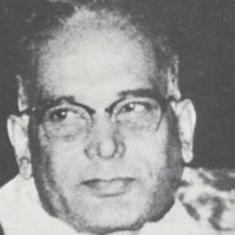It is an audacious piece of work. Save for a man tied to radiator in an empty room, literally nothing happens for more three-quarters of this 440-page long-form graphic narrative. Yet, Hostage by Guy Delisle is a riveting read. To achieve this near-impossible task for a non-fiction graphic novel requires nothing short of an astounding effort – it could only have come from someone of Delisle’s ability.
Hostage tells the story in first person of Christophe André. In 1997, André, a Frenchman who worked as an administrator for Médecins Sans Frontières (MSF) based in Nazran in Ingushetia, a Russian territory, bordering Chechnya in the Caucasus, was kidnapped by Chechen militia. After being in captivity for nearly four months he escaped. With help from local residents, André made it to the Chechen capital Grozny.
The stark, no-frills account of this incident is a departure from Delisle’s famous travelogues. The tone of Hostage is grim, and so are the colours and the text. Missing are the cartoonist’s nuanced observations on a place he is visiting with his wife, who also worked for the MSF. Delisle has changed his style completely to tell André’s story in a manner that highlights the agony of a captive. His drawings are stark and realistic. It is the same with the colour, which the artist keeps simple and minimalistic. The situation was grave as André’s fate hung between freedom and death. The art helps recreate his fragile feelings on the verge of breakdown.
A visual language
Delisle uses the visual part of the narrative in Hostage to inject drama into an otherwise flat, apparently uneventful structure. The cartoonist sequences his events to perfection and breaks the monotony of dull description with sudden jerks in the form of an opening of the door, noises heard through walls, and so on. The use of simple visual tricks does not allow the reader to skip even a panel.
Delisle also plays around with the sizes and number of panels to control the speed of the narrative. To depict a quick turn of events or thoughts racing through André’s mind, the writer uses between six and nine panels to a page. But to convey the ennui of the captive, he uses wider panels – three to a page. Not only that, for the near empty room where André spends most of his time in captivity, Delisle uses different “camera angles” to create drama.
A top shot, for instance, shows André lying in a corner of a very large room, evoking a sense of helplessness in the mind of the viewer. Sometimes just an empty dark corner or the high ceiling appears in a panel, depicting alienation. Close-ups are rare in Hostage and when they are used they help build empathy for the captive without being forced on the reader.
Starkly dramatic
Throughout the graphic narrative, the psychological drama is slowly built to a crescendo, only to come crashing down the next moment. The pacing of the flow of events is measured and the text (mostly an interview with André) is distributed so well that right from the word go the reader becomes a companion of the kidnapped Frenchman. His hopes are quickly shared and his despair lingers in the reader’s mind much after the event. And there is a lot more to keep the reader interested.
Stuck inside a darkened room (what an ingenious use of colour by the cartoonist to create the mood) somewhere in rural Chechnya, André was surrounded by people who did not speak or understand his language. Delisle uses this fact to play a game with readers. He visually represents the language spoken by the captors in a gibberish Cyrillic (possibly) script, increasing the font size to communicate irritation or disgust or a plain threat. Unknowingly, like André’, the reader starts making visual sense of the alien tongue.
Unlike in Delisle’s other travelogues, humour is almost entirely absent in Hostage. Such humour usually emerges in his work through the cartoonist’s interactions with alien cultures in, say, Pyongyang or Jerusalem. In this narrative, Delisle plays a waiting game before injecting a bit of levity.
While describing the terrible pain from sores on André’s foot, which halted his progress while fleeing from his captors, Delisle discovers fun in pain. The expression that André sports, the sounds of his agony and the little white stars around his feet all add up to evoke a smile. Delisle can afford to do that as André by then is a free man.
This is an honest account of a hostage crisis that tool place two decades ago. Only a master cartoonist can extract so much from a narrative that neither has exciting events attached to it, nor boasts of political significance. Delisle focuses on the workings on Andrés mind, and weaves a tale that is worth revisiting again and again. Christophe André might not even have been a footnote in the history of the Chechen insurgency, but Delisle had other ideas.

Hostage, Guy Delisle, Translated by Helge Dascher, Jonathan Cape.










